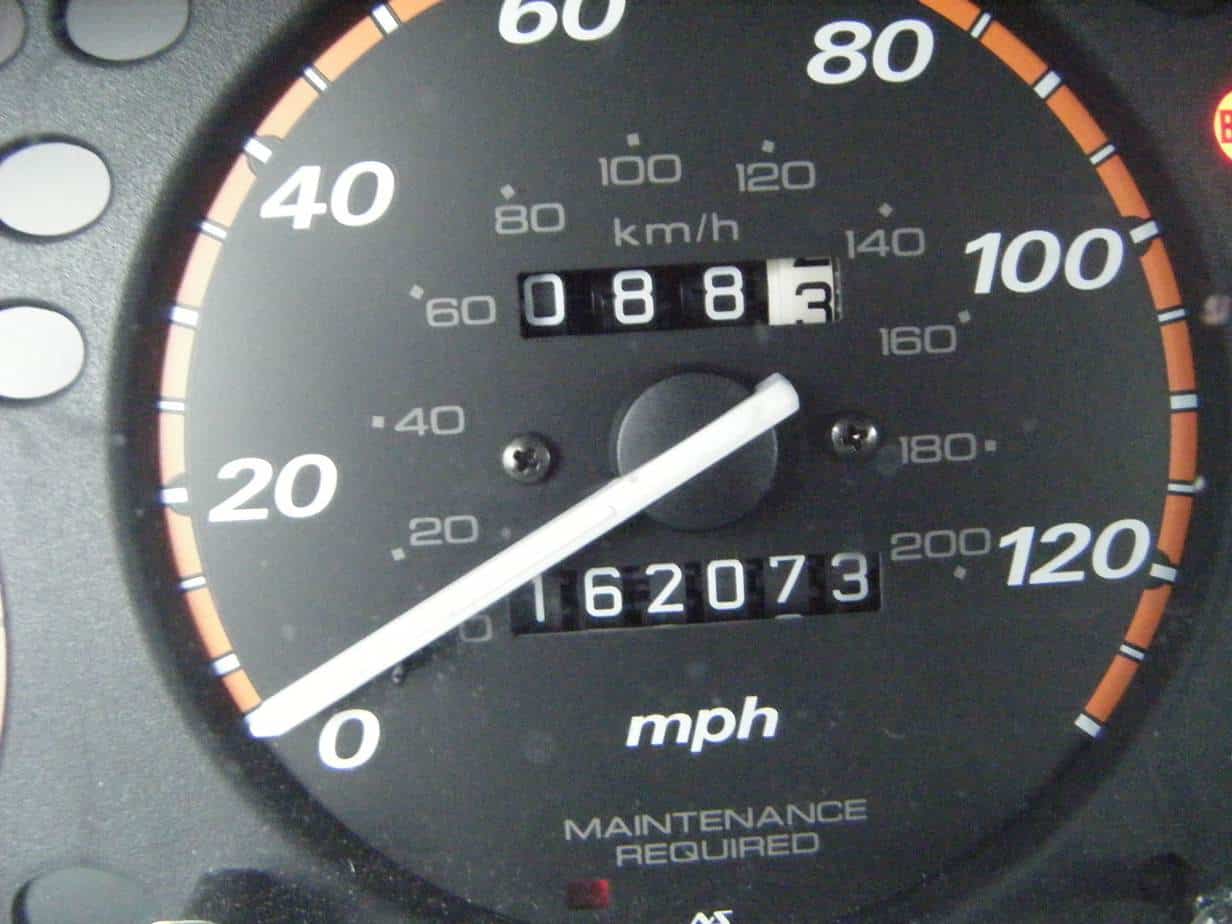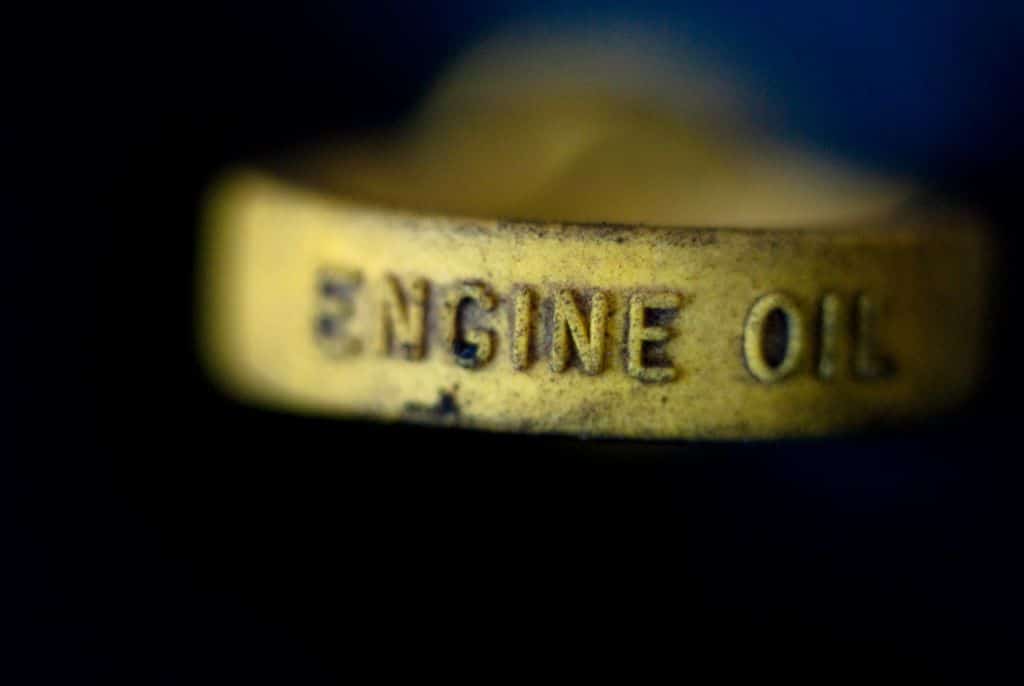Purchasing a high mileage vehicle involves more careful consideration than buying a car with low mileage or no mileage at all. It’s a far more complicated process than just showing up to the dealership and buying a brand new car or buying a certified pre-owned car. When considering a high mileage vehicle it’s imperative that you do your homework, and you or a mechanic does a thorough inspection of the car.
I ran a side-business buying and selling used cars, and parting out used cars for years. I have purchased two daily drivers that each had a little over 100,000 miles on them. In this article I am going to explain some important tips to consider when you are purchasing a high mileage vehicle and explain how I have avoided ever purchasing an accidental dumpster fire.
You can check out a video on tips for buying used vehicles here as well!
What’s a High Mileage Vehicle Anyways?
What’s a high mileage car in the first place?
You talk to a diesel owner, they’ll tell you a 150k mile diesel truck is not high mileage, in fact it’s barely broken in.
You talk to an experienced BMW owner, most (including me), will tell you that one with 100,000 miles on it has plenty of years left.
Then you have those cars that owners thank Jesus for whenever they hit 100,000 miles such as Chrysler Sebring’s and Range Rovers. On the other hand, owners may be thankful that their vehicle finally kicked the can if it was costing them thousands of dollars in drivetrain repair.
The point is that the definition of a high mileage vehicle varies depending on the vehicle and the person you are talking to.
Why Consider a High Mileage Vehicle?
So why would you consider a high mileage vehicle if it has additional risk in terms of repair cost and maintenance? The obvious answer is that a car with high mileage will be reflected in it’s price. Generally, the higher the mileage on the vehicle the more it will depreciate and the cheaper it will be. Diamonds in the dirt can and are frequently found in high mileage vehicles but it’s imperative that you do your homework on A) the type of high mileage vehicle your interested in and B) how well that car has been taken care of.
The Type of Car
You could not pay me to take a Porsche Boxster with 100,000 miles on the dash. Why not? Although they are awesome cars, they are only awesome while they are young. Porsche Boxster’s are known for having a terrible longevity rating. You buy a Porsche to be the coolest guy at the Saturday night movie theater and to get speeding tickets on the interstate. You DON’T buy a Boxster to leave it sitting at the mechanics shop every other week praying that the bill won’t be as high as the last.
Boxster’s are sports cars and I understand that most people are not out shopping for high mileage Porsche’s. But this logic applies to many other vehicles that simply don’t last the test of time. The BMW E65 was roundly criticized for a multitude of problems that have dropped this cars value through the floor. The Dodge Caravan has been infamous for its transmission problems and fuel injector failure.
The point is to do your research on the car your interested in. If the car appears to cheap for the mileage do some surfing on Google and find out if that model year was a dud. The last thing you want to happen is for you to buy a car in good shape with 60k on it, only to find out later that this model car’s transmission frequently goes out around 65k.
How Well is the Car Taken Care Of?
So now you have figured out what model car you are interested in but now you need to identify how well the particular car you are interested in has been taken care of.
Here is a quick personal tale:
One time me and my dad took a two hour trip to check out an E36 M3 with under 100,000 miles on it. We were interested because the guy only wanted $3,200 for it and the deal was simply to good to pass up. When we arrived, my dad looked the car over and asked the guy whether it was his daily driver. The guy told my dad that it was his nineteen year old son’s first car.
I knew at that point it was over. We looked at it for a few more minutes and we left. The guy even yelled offering it to us for $2700 as we were leaving but my dad was not having it.
Why? Because my dad has three sons and he has experienced first-hand what male teenagers can do to a first-car and he was not risking a hidden dumpster-fire no matter how cheap the cost.
Here’s Some Questions I Always ask Private Sellers
Was this your daily driver? – If he mentions it was his kid’s first car I suggest you walk away.
What type of gas do you put in this car? – Some cars such as BMW and Mercedes REQUIRE premium gas, and if the owner has been skimping on it the car will run like crap. Know what that particular car requires before you ask this.
Ask About Maintenance – Most people are pretty honest about maintenance history on their vehicle. Ask about recent work and major repairs the vehicle has had. If the seller says that a mechanic does all the work ask if he has any receipts.
Some people lie, but the good news is that most people are pretty bad liars. Always double check about major repairs. If the seller tells you that he had the head gasket replaced/transmission rebuild/engine rebuild/etc and he does not have receipts, treat it as if it did not happen.
Is the Mileage Real?

One of the biggest issues with high mileage vehicles is a seller who “rolls back” the odometer to make it appear that the vehicle has lower mileage than it really does. This has become significantly more difficult and less frequent in the age of digital odometers, but it could still happen.
Nowadays there is all kinds of proof such as Carfax’s and CarProof’s which can help determine that the odometer is in fact accurate. The vast majority of the time the odometer is accurate, but it’s best practice to ask the seller if he has a Carfax for the vehicle.
Another valuable component of a Carfax is that it will tell you if the vehicle has been wrecked, flooded, stolen or totaled.
Rust
Rust is a major concern for high mileage vehicle. High mileage correlates with age which contributes to rust. Vehicles that reside in the “salt belt” (colder states that frequently dust roads with salt in the winter) and coastal areas have a higher likelihood of rust.
Check under the vehicle for rust spots as the lower part of the car is where rust most frequently begins. Check the doors, inside and out. Take note if you see any paint bubbling off the body, as this is often an early sign of rust.
If you do find a small rust issue don’t get to worried. Small rust issues can typically be addressed before it spreads. You can often remove small rust spots by sanding them away.
Check the oil

One issue that occurs more frequently in higher mileage vehicles is an engine that burns through oil. Personally, I have had a Ford Ranger for two years that I bought for $1,200 that has slowly burned oil since the day I bought it. It runs like a champ, I just have to throw some in from time to time.
That being said a car that does not burn oil is better than a car that does. The easiest way to check if the vehicle burns oil is to check the dipstick. Nine times out of ten the seller will forget to fill the oil and if the vehicle has a burning problem it will be low.
Check the coolant
This one can only be done if the engine is cold but I find it extremely helpful to take a look at the coolant. Why? A high mileage vehicle that has not been taken care of will often have some pretty disgusting looking coolant. If the vehicle has a cast-iron block the radiator may be filled with rust (I’ve seen it).
Pop the lid off the radiator, check if the coolant level is optimal and then identify if you cant see any floating particles. Although a radiator with some rust in it may not be a deal-killer, it should give you a better idea of how the vehicle has been taken care of.
Check the exhaust!
With high mileage vehicles there is always a worry of a potential engine problem. A dead giveaway is smoke coming out of the exhaust. The infamous white smoke is a giveaway for head gasket failure. White smoke indicates that coolant is getting into the combustion chamber and burning off. Head gasket replacements often cost several thousand dollars.
Blue smoke is a sign that the vehicle is burning off excessive amounts of oil. This is often a piston ring or valve guide seal that is faulty. The oil is getting into the combustion chamber and burning off. It also creates a bad smell and it is pretty bad for your health.
Black smoke usually indicates the engine is burning off excessive amounts of fuel. This is usually the easiest to diagnose and fix, but the excessive burning will cost you more money in fuel costs.
Suspension
The easiest way to check a suspension is a test-drive. Go ahead and hit some potholes (not Ohio sized) and find a speed bump to roll over. If you find the car to be incredibly bouncy or there’s a nice jingle from underneath, you are going to have some suspension repair bills.
Conclusion
As you can probably see from this list, there is a lot of things to keep in mind when you are purchasing a high mileage vehicle. I would highly recommend that you write down a cheat sheet of questions and things to check when you go out to look at a car. Hope this article helped you out!
